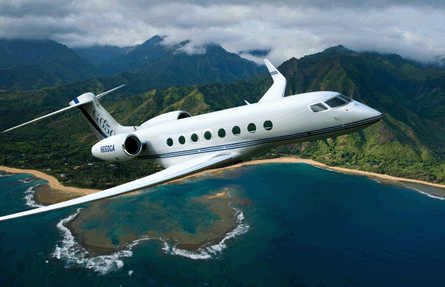Honeywell is getting in-flight experience with the new wave in flight management system technology on board the Gulfstream G650, which has the company's next-generation FMS as standard equipment. G650 test flights began on 25 November.
Loaded into the aircraft's Honeywell-built Primus Epic avionics system, the new-generation FMS is a software library, with best-practice advanced navigation features and core functionality that the company says will, ultimately, unify its 16 FMS systems in operation today, both in the business aviation and air transport sectors.
Honeywell says the commonality built into the NGFMS has enabled it, for the first time, to offer the same core FMS for both the business jet and air transport markets, with the upcoming first flight of the Boeing 747-8F being its inaugural application in the transport market.
For the G650 - slated for certification in 2011 and entry into service in 2012 - the NGFMS will include "down-path" transitions, a feature on the Airbus A380 and Boeing 787 that gives pilots a detailed look-ahead at a route and the ability to minimise distance, hence fuel burn.
 |
|---|
© Gulfstream |
Pilots on the G650 will also have a "true secondary flight plan" capability with the NGFMS, allowing them to evaluate the performance pros and cons of contingency routes without entering the new flight plan into the computer, says Chad Cundiff, vice-president of crew interface systems for Honeywell.
The idea for an NGFMS emerged in 2005, says Cundiff, when Honeywell began considering how flight management would have to evolve with the arrival of the next-generation aviation transportation system (NextGen) in the USA and single European sky in Europe. "We realised the FMS we had would have to grow to include features like 4D navigation and optimised performance routing with weather," says Cundiff.
At the same time, Honeywell also wanted to unify its FMS product line and incorporate lessons learned from more than three decades of building FMSs.
That meant a software architecture that is partitioned for simple upgrades, certifying all software to industry-accepted criticality levels (DO-178 Level B) and providing features to optimise climbs, descents and cruise flight. One new option for cruise is the ability to use four winds aloft altitudes in computations, rather than one, to help pilots optimise fuel burn and trip time.
Cundiff says Honeywell has tested "80-90%" of the functionality of the NGFMS to date, and is now in the process of "validation and verification in conjunction with our customers".
As for retrofitting NGFMS into other existing business aviation and air transport models, Cundiff says Honeywell is in talks with "a number of our current FMS customers" and expects over the coming years to "continue to have certifications at a regular pace".
Source: Flight International



















